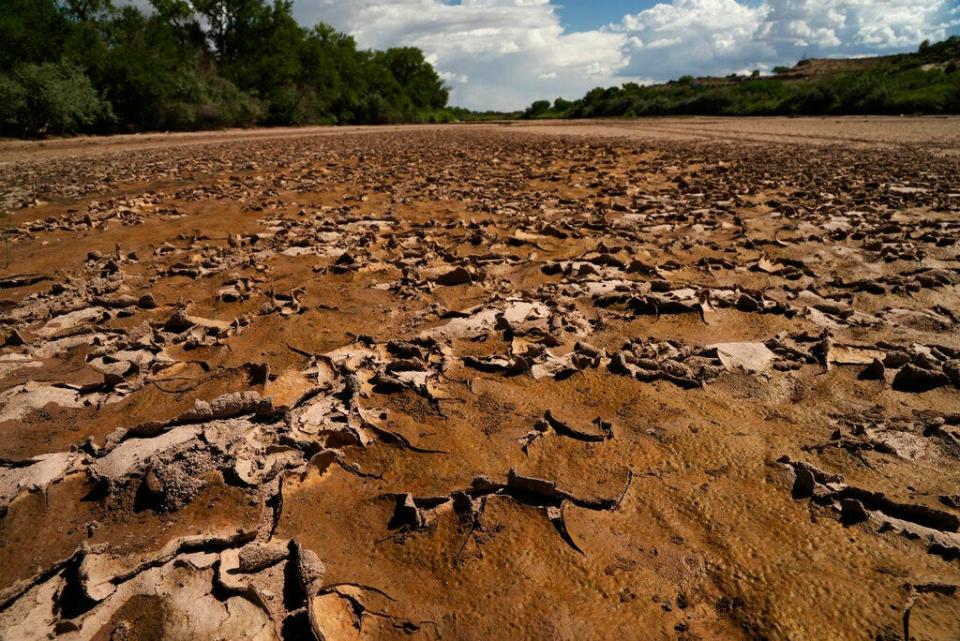In fight over Rio Grande water, agreement could emerge from behind closed doors
This story was first published in Source New Mexico.
After the October bombshell of a draft agreement to end Texas and New Mexico’s fight over Rio Grande water dropped, much of the controversy in the Supreme Court lawsuit slipped behind sealed documents and hearings closed to the public.
The lawsuit — officially called Original No. 141 Texas v. New Mexico and Colorado — dragged on for nine years in the Supreme Court and has cost taxpayers more than $30 million in legal fees.
Special Master Michael Melloy, the federal appeals justice who oversees the case, weighed whether a proposed settlement should be made public in a hearing Thursday behind closed doors. Melloy limited the hearing to attorneys representing the states and federal government as parties.
More than a dozen groups — including two major irrigation districts, farmers, New Mexico State University and cities such as Las Cruces and El Paso — are part of the case as amici curae, but not as parties. Groups with amici curiae status are allowed to observe but could be excluded by the judge during the hearing.
It’s unclear when Melloy’s written order will be available.
A carve out
All attention is on the surprise settlement agreement proposed in October by Texas, New Mexico and Colorado to end ligation. The draft agreement between the three states was negotiated over the objections of the two major regional irrigation districts and the federal government.
The states call the proposed agreement a “carve-out decree,” which resolves issues between Texas and New Mexico over Rio Grande water but leaves open discussions of “intrastate” water issues in New Mexico, including the management of federal irrigation canals and dams.
Top attorneys for the federal government disagreed that any issues could be “carved out” and objected to the states’ proposed settlement, saying it would violate the confidential discussions and offers made in negotiations. The terms of the proposed agreement continue to remain confidential.

U.S. objections
Fred Liu, assistant to the Department of Justice’s solicitor general, asked Melloy to toss out the proposed settlement.
“Without the United States agreeing to this settlement, this compact dispute can’t end,” Liu said at the October hearing announcing a settlement.
Melloy allowed the federal government to submit their objection to the settlement under seal because its objections would reveal positions protected under confidential settlement talks.
El Paso County’s irrigation district joined the federal government’s objections, even though officials there cannot read the document itself either.
In court filings, attorneys for the El Paso County Water Improvement District No. 1 said that making the state’s draft agreement public would reveal the irrigation district’s legal strategy in a separate lawsuit in federal district court. That case is on hold until the Supreme Court lawsuit is resolved.
Maria O’Brien, attorney for the irrigation district, argued that Melloy should require all to resume negotiations and not accept a “truncated” agreement.
“The effort to make the states’ sealed submissions public now may fairly and objectively be viewed as itself a negotiating maneuver,” O’Brien wrote.
The ‘sideshow’
The states jointly argued the federal government has no legal basis for keeping the documents from the public, saying that water users along the Rio Grande will be impacted.
New Mexico attorneys further argued the proposed settlement requires future requests in upcoming legislative session, according to court documents
“New Mexico anticipates that certain legislative measures may be introduced in the coming months to facilitate compliance with the consent decree,”attorneys wrote. “But New Mexico will be unable to explain the full reasons for those measures to individual legislators unless the seal is lifted.”
Attorneys for New Mexico amici — including the city of Las Cruces, farmer’s associations, New Mexico State University and the Bernalillo County Water Utility Authority — wrote their own motion asking for the proposed agreement to be made public, calling the federal government’s confidentiality claims “a sideshow” in court documents.
“Resolution of this litigation is of great public importance and interest, as it will affect all those who rely on a municipal water supply and an agricultural economy in New Mexico worth hundreds of millions of dollars,” they wrote.
More than 221,000 people live in Doña Ana County below Elephant Butte Reservoir. Las Cruces, which is the state’s second-largest city, and New Mexico State University rely entirely on groundwater supplies.
Tens of thousands of acres of farmland for chile, onions, pecans, alfalfa and other crops pump groundwater in years when river irrigation cannot sustain crops. In the past 20 years, reliance on groundwater is more frequent as climate change and human usage shrink the Rio Grande.
Others are reading:
Why is your internet so slow? Obstacles abound in upgrading southern NM to high-speed
US judge temporarily halts Biden bid to end Trump-era border policy
Game of Thrones armorer speaks at Deming Early College High School
Danielle Prokop is a freelance reporter based in the Borderlands. She covers climate change, local government and communities in Southern New Mexico and Far West Texas. She can be reached at daniprokopn@gmail.com.
This article originally appeared on Las Cruces Sun-News: Rio Grande water agreement could emerge from behind closed doors

